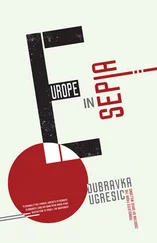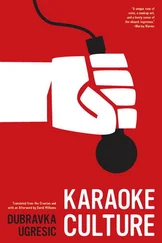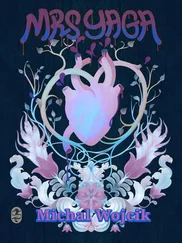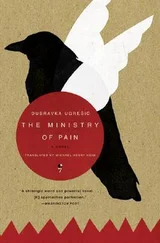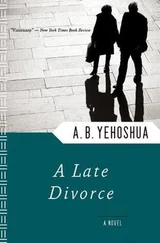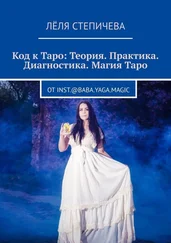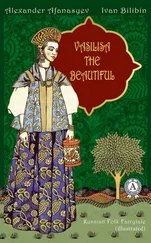A proportion of nuptial, birth and funerary rites belong to the bath. Pre-nuptial rituals involving the bride are very similar to those for funerals, for the bride’s departure from the home where she grew up marks her ritual death to her family.
Sensing that a passing traveller is before her, Baba Yaga furiously threatens to eat him up. The hero, as we have already mentioned, tames Baba Yaga with his insolence, and asks her to heat his bath, to begin with, and to prepare him something to eat, and only then will he tell her where he is going and what he seeks.
I. P. Davidov argues that the steam-bath in Baba Yaga’s household is equivalent to the funerary rite that is linked to the site of the bath. [38] I. P. Davidov, Banja u Baby Jagi . Vestnik Moskovskogo Universiteta, Serija 7. Filosofija 2001.
The bath is a place of transformation, of ritual ‘deadening’. The principal hero gets ready to travel to the world of the dead, and the ritual steam-bath and the meal are necessary preparations for this journey. The half-blind Baba Yaga recognises the hero by his scent: he smells of ‘living human’ ( russkim duhom pahnet, russkoj koskoj ), and as a living man he cannot survive in the world of the dead. Baba Yaga herself lives on the frontier between the worlds of the living and the dead. She is the ‘customs officer’, and her hut is the ‘customs house’. It follows that Baba Yaga is ‘bilingual’, fluent in the language of the dead and that of the living. This is why she alone can give the hero his symbolic visa to enter the world of the dead. The ritual steaming is intended to ‘deaden’ the hero (so they won’t recognise him by smell in the world of the dead), to modify or adapt him (so that he can see and talk in the kingdom of the dead). Vladimir Propp argues that ritual food serves the purpose of releasing a dead man’s mouth in the other world. If he is to descend into the kingdom of the dead, the principal hero of the tale must learn a number of other tricks as well: how not to fall asleep there, how not to laugh, how to talk and see like a dead man. Baba Yaga will give the hero a horse for the road to the kingdom of the dead and a ball of thread that will lead him where he wants to go. Baba Yaga herself only rarely leaves her (sentry) post.
The hero’s return to the world of the living is accompanied by new rituals in which water once again plays a key part: dead and alive. Dead water heals wounds and amputated parts of the body, while living water restores the soul to the body.
Remarks
I think your author’s choice of a spa as the setting for the second part of her fictional diptych is unusually successful. Spas are an important literary topos: a significant portion of Russian literature originated in spas (to mention just one: famous Baden Baden), or take place in or around spas, or even – like Mikhail Zoshchenko’s classic, Scenes from the Bathhouse – take as their theme the comic-absurd communist customs linked to the popular Russian banya . Milan Kundera chose a Czech spa for the settings of his novel The Farewell Party and his story Dr Havel After 20 Years . The topos of the spa succeeds in folkloristic terms, for merely by choosing it as her setting, the author brings together a whole series of ancient legends connected with healing springs, legends about water that heals and apples that restore youth, about living and dead water, and water that gives strength and takes it away ( voda sil’naja i bezsil’naja ). Baba Yaga’s steam-bath, where the hero ritually steams himself before setting off on his long journey, and the heroines bathe (because Baba Yaga treats them as so many potential tasty morsels), belongs to this series. (‘Go and heat the bath to bathe my niece, and be sure to bathe her well: I want to eat her for breakfast!’)
Demonic beings have feet that give away their demonic nature: they might be hooves, or birds’, ducks’, geese or hen’s legs, or they might have too many toes on their feet (six instead of five), or even have a single solitary foot.
In old China, as also in the Buddhist, Islamic and Christian worlds, it was believed that erosion marks on rocks were the footprints of gods, heroes, prophets and saints. The mother of the founder of the Chou dynasty, for example, became pregnant when she stood in a god’s footprint. The beliefs about footprints in stone – which were left by gods, saints and prophets, but also by beings such as fairies, witches, giants and devils – are scattered all over the place. They have survived down to the present day, with the pavement in front of Grauman’s Chinese Theater in Hollywood, where movie stars – our modern gods and goddesses – leave their foot and hand prints.
Some psychoanalysts prefer the interpretation that men see the female foot as a ‘missing penis’, whence, allegedly, stems the male fetish for women’s feet and shoes. And this, we could say, is where the traditional Chinese practice of binding women’s feet (to keep them smaller and ‘more beautiful’) belongs, along with the belief that witches and other female demons have big feet or birds’ feet.
Baba Yaga is perceived as one-legged, even though she isn’t: ‘Ah, you, Baba Yaga, peg-leg!’ ( Ah, ty, Babushka Jaga, odna ty noga! ). In the fairytale Ivan the Fool, Baba Yaga appears before three brothers and hops around them on one leg.
Baba Yaga’s most frequently mentioned feature is her skeleton leg ( Baba Yaga, bony leg! ). This leg most often turns up in the singular, and in different guises: made of wood, gold and (most often) bone. Although it is easiest to suppose that the reason for this lack of precision lies in errors that crept into the retelling of the story, some commentators have latched onto this detail, seeking a deeper reason.
In one tale, Baba Yaga turns into a snake before she dies, leading some commentators (such as K. D. Laušin) to find evolutionary characteristics in the figure of Baba Yaga. In other words, first she was a snake (embodying death), then she evolved into the one-legged goddess of death and then she migrated from myth into fairytale, becoming a character : Baba Yaga, bony leg. Her mortar also has its evolutionary aspect: originally, Baba Yaga jumps into the mortar – ‘the mortar runs along the road, and Baba Yaga sitting inside’ ( bezhit stupapo doroge, a v nej sidit Baba-Jaga ) – but later she flies in it, too. One of the supporting arguments for this ‘evolutionary’ interpretation lies in Baba Yaga’s name: Yaga supposedly derives from the Sanskrit word ahi, meaning ‘dragon’.
(In Serbia, by the way, Baba Yaga appears as an old woman with a hen’s leg – Baba Jaga, kokošja noga! )
Vladimir Propp explains this by reference to certain archaic forms of the Russian tale, where a billy-goat, bear or magpie lies in the hut instead of Baba Yaga. The frontier between animal and human is a person with an animal leg. In the case of Baba Yaga, who according to Propp guards the entrance to the world of the dead, this leg is replaced with the skeleton leg. The Empusa, who guards the anteroom of Hades, has one leg of iron and the other of donkey excrement.
Remarks
The wheelchair that Pupa uses or the walker, a metal walking-frame that the author’s mother uses, are modern technical equivalents of Baba Yaga’s bony (golden, wooden or hen’s) leg. The description of the dead Pupa’s leg, which has the ghastly colour of rotten meat, might be an allusion to Empusa. And Kukla’s big feet too associate her discreetly with all those female mythical creatures with animal legs.
Baba Yaga’s hut stands on either one or two hen’s legs. These legs have prominent claws. The three-digit hands that can be seen on European vases of the early Neolithic are really birds’ feet. The mythic importance of birds’ claws dates from the Palaeolithic, when prints of birds’ feet were put on cave walls in northern Spain. Later the same three-toed prints appeared on vases, urns and figurines with female shapes. According to Maria Gimbutas, the bird-claw prints testify to the exist ence of the Great Goddess, half-woman and half-bird. Let’s remind ourselves once again that, in some Slavic versions, Baba Yaga herself, not only her hut, is described as an old woman with a hen’s leg.
Читать дальше

